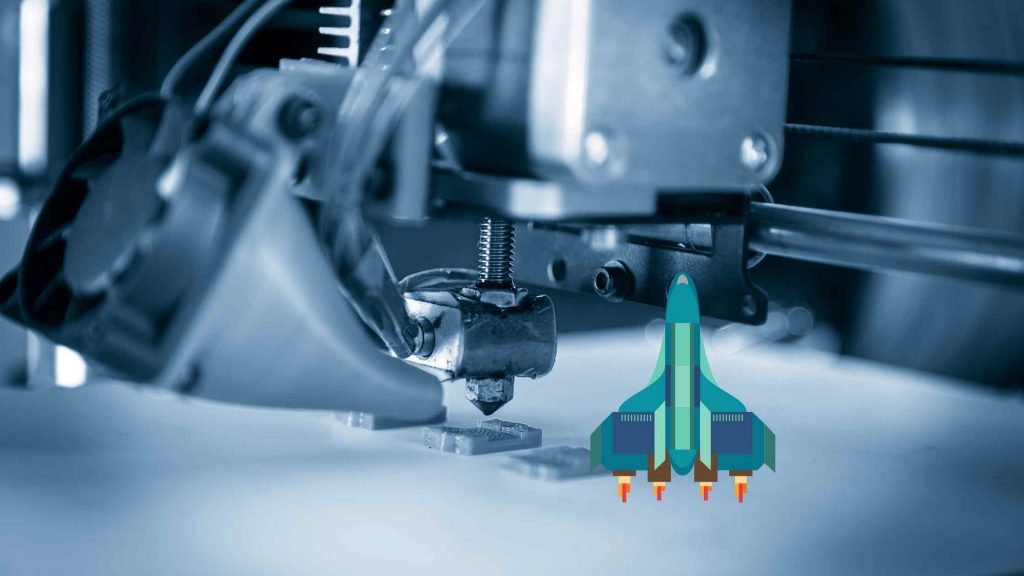3D printing – once the domain of nerdy hobbyists – is gaining momentum across multiple industries including the satellite sector thanks to the efforts of NASA to advance 3D printing in space, as well as early commercial innovators. Today, antenna and propulsion rocket companies lead the charge to print fewer components on key systems using this innovative technique where successive layers of material are layered to produce parts.
Several of satellite’s top additive-manufacturing evangelists predict that 3D printing’s move to mainstream is not a question of if, but when. Some say it will be ubiquitous within the next five years, while others say mainstream status is already here.
“I think we’re still three to five years out from that watershed moment when it is ubiquitous on the platforms and places it makes sense,” says Michael Hollenbeck, CTO of Optisys, an antenna design company that specializes in the use of metal 3D printing. “It’s a disruptive technology that has the ability to add capabilities to small and large satellites that they otherwise would not be able to have.”
Putting a satellite in space is news of the past
Building in space rather than on the ground, courtesy of 3D printers and automated assembly, comes with many advantages. You can save volume by sending dense feedstock for 3D printers rather than capacious constructed objects. More importantly, if you don’t have to build to survive the traumatic forces of launch, you can use more fragile designs, and hence less mass.
A powerful generation of entrepreneurial billionaires – like Elon Musk and Jeff Bezos – have veered their attention to space commercialization, paving the way for new space companies. As the exciting space industry ecosystem unravels, companies are turning to additive manufacturing (AM) technologies to lower the costs of access to space, a concept pioneered by Musk’s SpaceX. At just $2,720 per kilogram for a ride aboard its Falcon 9 two-stage rocket, the space titan managed to bring the cost down from the whopping $54,500 per kilogram it used to cost to launch a payload on the space shuttle.
From manufacturing rocket engines to launch vehicle parts, 3D printing disrupts yet another industry by offering design freedom, reducing weight, and lowering costs. The journey into space commercialization has already begun, and AM is becoming a big part of it. Even the ISS has become a testbed for commercially designed 3D printing technologies.
Putting a satellite in space is news of the past, but launching a spacecraft that can 3-D print and self-assemble is a story of the future. NASA is now betting on the technology being ready for prime time as early as 2022.
Building stuff in space
Made In Space is a California-based startup that specializes in developing manufacturing tech to be used in space — a task easier said than done. Space isn’t the friendliest of environments for building things (or doing anything, for that matter). For starters, the average temperature in outer space is -457.87 degrees Fahrenheit (-270.15 degrees Celcius), and there is little gravity or pressure.
But back in 2014, Made In Space made history by 3-D printing the first object ever produced in space. And since 2016, they have been running a permanent manufacturing unit inside the International Space Station, dubbed the Additive Manufacturing Facility (AMF). Since its installation, this on-demand hardware store has built over 200 tools, devices and components via 3-D printing.
Just like astronauts can survive the harsh conditions of space thanks to their protective suits, the AMF still functions in space because its parts are encased, letting it print like it would on Earth. AMF can print using a variety of materials, including an aerospace-grade polymer commonly found in spacecraft and rocket parts. And earlier this year, the company also saw its Refabricator installed on ISS, which can use recycled plastic to 3-D print new parts.

A self-assembling spacecraft
Now the goal is to build large spacecraft parts. That will require leaving the confines — and protection — of the ISS and moving their 3-D printing operation into the vacuum of space. The undertaking will require the machine to print parts larger than itself and then assemble them. Made In Space claims to have developed a system capable of integrating 3-D printing and robotics to do just that.
The plan is for Archinaut One to travel to low-Earth orbit and then print two telephone pole-sized beams on each side of the spacecraft. As the beams extend out, solar arrays will unfold on their tops that can generate 5 times more power than traditional solar panels on spacecraft of similar size.
If successful, the technology will be a game-changer for space exploration. One of the most significant limitations of space travel is how much stuff you can bring aboard your spacecraft. That’s not a problem if you can just build things you need once you need them. Space 3-D printing would let companies and governments construct complex structures in orbit and reduce the need for astronauts to do spacewalks for repairs.
“By taking the lead in the development of this transformative technology, the United States will maintain its leadership in space exploration as we push forward with astronauts to the Moon and then on to Mars,” said Jim Reuter, associate administrator of NASA’s Space Technology Mission Directorate, in a press release.
“This technology will help humans go back to the Moon and on to Mars by lowering the cost of delivering capabilities in [low-Earth orbit] and beyond,” said Andrew Rush, president & CEO of Made In Space, in a tweet. He added: “I am excited to see the team take on this challenge and realize the opportunities of Archinaut in-space manufacturing and assembly technology.”
References
- Self Manufacturing Spacecraft : 3D Printing In Outer Space – https://3dprint.com/278887/3d-printing-and-the-future-of-space/
- 3D printing – once the domain of nerdy hobbyists – is gaining momentum – http://interactive.satellitetoday.com/via/april-2020/from-prototyping-to-production-3d-printing-for-space-comes-into-its-own/
- Building stuff in space – https://astronomy.com/news/2019/07/nasa-bets-on-spacecraft-that-can-3d-print-and-self-assemble-in-orbit














